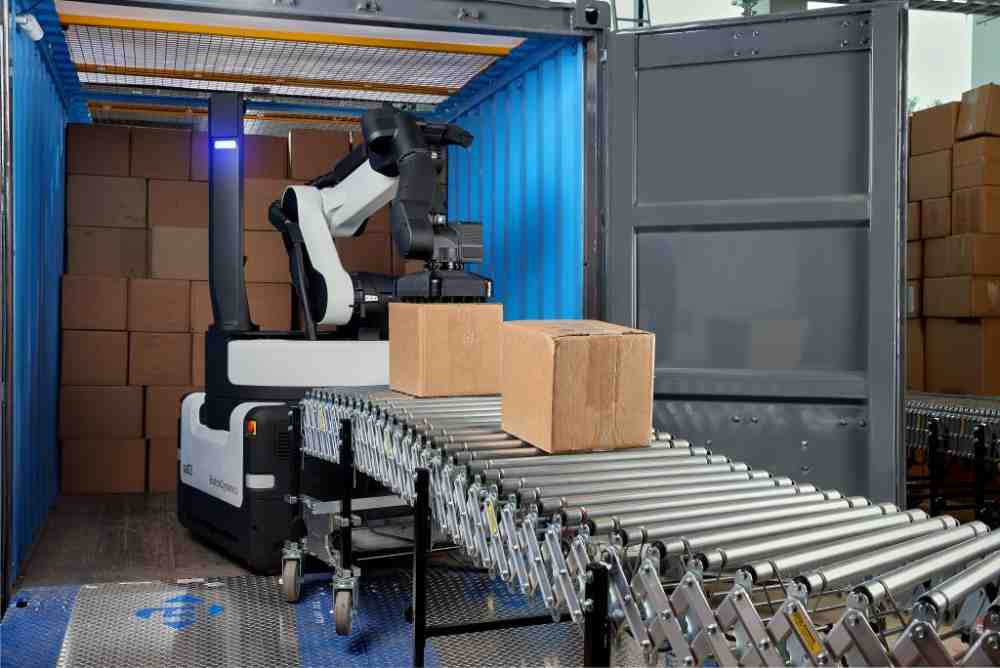Boston Dynamics’ Stretch™ robots are revolutionizing warehouse operations, addressing physically demanding and potentially hazardous tasks while contributing to increased efficiency, labor allocation, and environmental sustainability. Stretch robots, initially designed for truck unloading, are poised to take on additional roles within the warehouse, offering a comprehensive solution for various logistics challenges.
Enhancing Safety and Efficiency
Stretch robots have already demonstrated their prowess in unloading trailers and shipping containers, considered one of the most challenging jobs in the warehouse. These robots operate around the clock, reducing the risk of injury associated with heavy lifting and repetitive motions for human workers. The extreme temperatures inside containers during summer and winter are no longer a concern for the tireless Stretch robots. The ultimate goal is to automate tasks that are labor-intensive and physically taxing, allowing human workers to focus on jobs requiring higher cognitive ability and manual dexterity.
Expanding the Role of Stretch
While Stretch excels at truck unloading, its capabilities extend far beyond this initial task. The robot’s advanced autonomy, inherited from Boston Dynamics’ legged robots, positions it for diverse roles within the warehouse. The roadmap for Stretch includes case picking, palletizing, depalletizing, and container loading. Stretch’s compact base, omnidirectional movement, and powerful gripper make it an ideal candidate for handling these various tasks.

Case Picking, Palletizing, and Depalletizing
Case picking, a critical aspect of warehouse operations, involves selecting items from shelves and placing them on pallets. Stretch’s mobility and reach make it an efficient solution for case picking, allowing it to roam among warehouse aisles and pull cases from under racking. The robot’s versatility extends to palletizing and depalletizing, stacking boxes up to 50 pounds in weight and reaching heights of 10.5 feet. Stretch’s contributions to these tasks streamline operations, reduce manual labor, and maintain the uninterrupted flow of goods.
Container Loading
Stretch’s capabilities extend to container loading as well. The robot can pull boxes from conveyors and place them into trailers, a process that significantly impacts the efficiency of logistics operations. The massive volume of packages shipped globally underscores the potential for automation in container loading, saving manual unloaders from the heavy lifting and accelerating the flow of goods.
Environmental Impact
One notable advantage of Stretch’s unloading application is its positive environmental impact. By unloading only floor-loaded containers, Stretch eliminates the need for wooden pallets and plastic wrapping. This change results in higher-density storage within containers, reducing fuel consumption and CO2 emissions while optimizing freight capacity.
Unleashing the Warehouse of the Future
Stretch’s transformative impact on the warehouse is only beginning. With the robot’s expanded roles, warehouses can anticipate streamlined processes, enhanced safety, increased efficiency, and digital visibility into operations. The journey with Stretch is ongoing, as Boston Dynamics continuously enhances the robot’s capabilities, unlocking its potential for the next significant application in logistics.
At Boston Dynamics, the mission is clear: to redefine the capabilities of robots and improve people’s lives. With Stretch, this vision is becoming a reality, setting the stage for a future where advanced automation reshapes warehouse operations.
